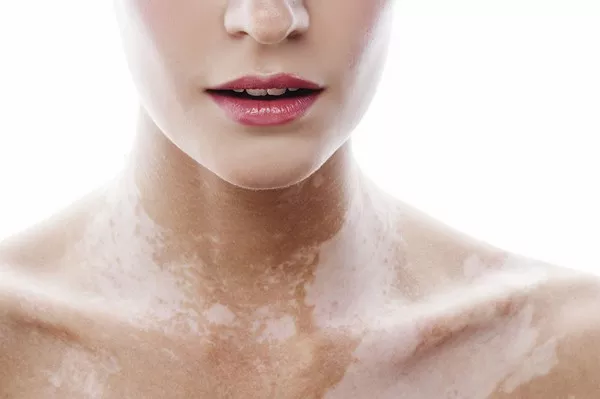Vitiligo is a condition that has sparked considerable curiosity and concern due to its distinctive appearance and unclear etiology. One common question surrounding this condition is whether vitiligo can spread from person to person through touch. This article aims to address this question comprehensively, providing a detailed understanding of vitiligo, its causes, and the myths associated with its transmission.
Understanding Vitiligo
Vitiligo is a chronic skin disorder characterized by the loss of pigment, resulting in white patches on the skin. This occurs due to the destruction or malfunction of melanocytes, the cells responsible for producing melanin, the pigment that gives skin its color. Vitiligo can affect any part of the body, including the skin, hair, and mucous membranes.
Causes of Vitiligo
The exact cause of vitiligo remains unknown, but several theories suggest it may result from a combination of genetic, autoimmune, and environmental factors.
1. Genetic Factors: Research indicates that vitiligo may have a hereditary component. Approximately 30% of individuals with vitiligo report a family history of the condition. Certain genes have been identified that may increase susceptibility to vitiligo, particularly those involved in the immune response and melanocyte function.
2. Autoimmune Factors: Vitiligo is often associated with autoimmune disorders, suggesting that the immune system may play a role in its development. In autoimmune diseases, the immune system mistakenly attacks the body’s own cells. In vitiligo, the immune system targets and destroys melanocytes, leading to depigmentation.
3. Environmental Triggers: While genetics and autoimmunity are significant factors, environmental triggers such as stress, skin trauma, or exposure to certain chemicals may also contribute to the onset or progression of vitiligo.
Symptoms and Diagnosis
The primary symptom of vitiligo is the appearance of white patches on the skin. These patches are more noticeable in individuals with darker skin tones. Other symptoms may include premature graying of hair on the scalp, eyebrows, eyelashes, or beard, and loss of color in the mucous membranes.
Diagnosis is primarily clinical, based on the appearance of the skin and a thorough medical history. Dermatologists may use a Wood’s lamp, which emits ultraviolet light, to identify areas of depigmentation. Additionally, blood tests may be conducted to check for associated autoimmune conditions.
Can Vitiligo Spread by Touch?
The Myth and the Facts
One of the most pervasive myths about vitiligo is that it can spread through physical contact. This misconception likely stems from the visible and sometimes extensive nature of the condition, which can evoke fear and misunderstanding.
Scientific Evidence
There is no scientific evidence to support the claim that vitiligo is contagious or can spread through touch. Vitiligo is an autoimmune condition, not an infectious disease. This means it is caused by the body’s immune system reacting against its own cells, not by a virus, bacteria, or any other pathogen that can be transmitted from person to person.
Dispelling the Myths
Myth 1: Vitiligo is Contagious
Vitiligo is not a contagious disease. It cannot be spread by touching someone with vitiligo, sharing personal items, or through any form of physical contact. This misconception is harmful as it can lead to social stigma and isolation for those affected by the condition.
Myth 2: Vitiligo is Caused by Poor Hygiene
Poor hygiene does not cause vitiligo. The development of vitiligo is unrelated to cleanliness or personal hygiene practices. This myth can perpetuate negative stereotypes and unnecessary guilt among individuals with vitiligo.
Myth 3: Vitiligo is a Result of a Curse or Superstition
In some cultures, vitiligo is wrongly believed to be a result of a curse, supernatural influence, or bad karma. These beliefs are rooted in superstition and have no basis in scientific fact. Education and awareness are crucial in combating these misconceptions and reducing the stigma associated with vitiligo.
Living with Vitiligo
Living with vitiligo can be challenging due to the visible nature of the condition and the psychological impact it can have. Here are some strategies and support systems that can help individuals cope with vitiligo:
Medical Treatments
While there is no cure for vitiligo, various treatments can help manage its symptoms and improve the appearance of the skin. These include:
1. Topical Treatments: Corticosteroids and calcineurin inhibitors can be applied to the skin to reduce inflammation and encourage repigmentation.
SEE ALSO: Does Vitiligo Itch When It Starts?
2. Phototherapy: Controlled exposure to ultraviolet (UV) light can stimulate melanocytes and promote pigment production. Narrowband UVB therapy is a common phototherapy treatment for vitiligo.
3. Surgical Treatments: In cases where vitiligo is stable and does not respond to other treatments, surgical options such as skin grafting or melanocyte transplants may be considered.
4. Depigmentation: For individuals with extensive vitiligo, depigmentation of the remaining pigmented skin can create a more uniform appearance. This involves the use of medications to reduce pigmentation in the unaffected areas.
Psychological Support
The psychological impact of vitiligo can be significant, affecting self-esteem and emotional well-being. Support groups, counseling, and therapy can provide valuable assistance. Connecting with others who have vitiligo can help individuals feel less isolated and more understood.
Cosmetic Solutions
Cosmetic products, such as makeup and self-tanners, can help cover vitiligo patches and provide a sense of normalcy. Specialized products are available that are designed to match various skin tones and are long-lasting.
Raising Awareness and Promoting Acceptance
Education and awareness are key to dispelling myths and reducing the stigma associated with vitiligo. Public awareness campaigns, educational programs, and media representation can play a significant role in promoting acceptance and understanding of vitiligo.
Vitiligo Awareness Campaigns
Organizations such as the Vitiligo Research Foundation and the American Vitiligo Research Foundation work tirelessly to raise awareness about vitiligo. These campaigns aim to educate the public, support research, and provide resources for individuals with vitiligo.
Media Representation
Accurate and positive representation of vitiligo in the media can help normalize the condition and combat negative stereotypes. Celebrities and public figures with vitiligo, such as model Winnie Harlow, have played a crucial role in raising awareness and promoting acceptance.
Educational Programs
Educational initiatives in schools, workplaces, and healthcare settings can help spread accurate information about vitiligo and reduce misinformation. Training healthcare professionals to provide empathetic and informed care is also essential.
Conclusion
Vitiligo is a non-contagious autoimmune condition characterized by the loss of skin pigment. It cannot spread through touch or any form of physical contact. Misconceptions about vitiligo can lead to stigma and discrimination, making education and awareness crucial in promoting acceptance and understanding.
Living with vitiligo can present challenges, but various treatments and support systems are available to help individuals manage the condition and maintain a positive quality of life. By dispelling myths and raising awareness, we can create a more inclusive and compassionate society for those affected by vitiligo.
Related Topics:



























